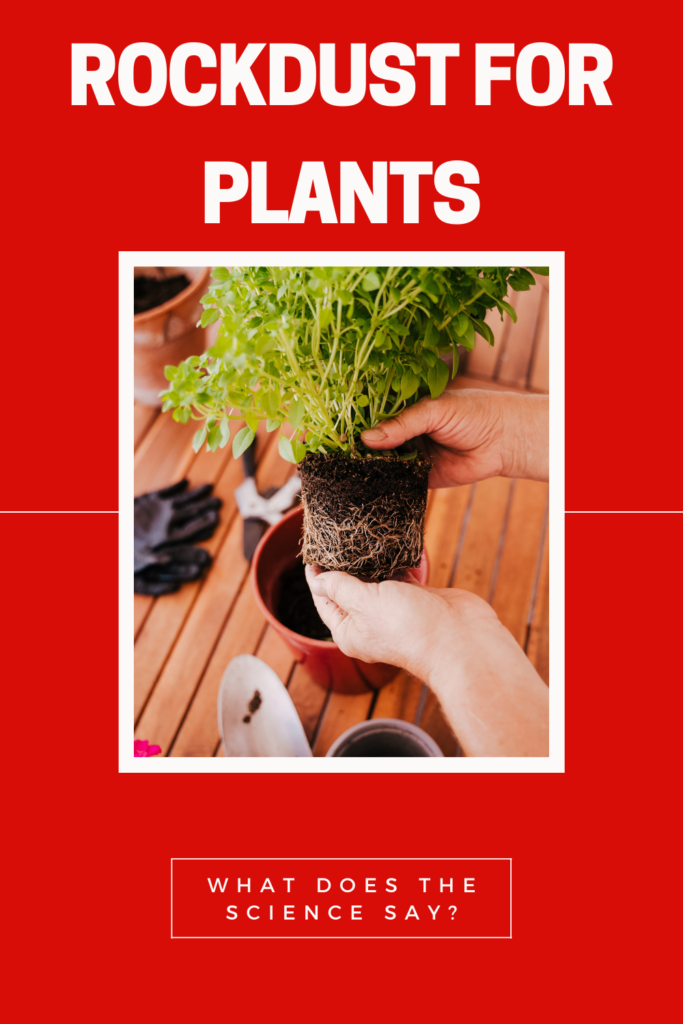- Canada’s Growing Zones Are Changing 2024 - January 12, 2024
- Attracting Wildlife To The Garden - May 16, 2023
- How To Garden Near A Septic Tank - May 9, 2023
Rock dust is a popular soil amendment that can be used for both houseplants and outdoor gardeners. Rock dust with houseplants seems to have merit but what about with the garden. What does the science say about this amendment and its effects on plants? More importantly how does rock dust ultimately affect our soil or soil as mediums?
If you are new to this blog my name is Ashley and I am a soil scientist. I am located in a Canadian Zone 3 and a USDA Zone 4. I write articles, make YouTube videos, Instagram & Facebook posts all designed for Canadians and Cold Climate gardeners using science-based methods. If you are looking for anything specific be sure to let me know in the comments down below.
In order to understand what rock dust does for our plants, we need to first determine what exactly this product is. Rock dust can be described as a silicate rock that has been pulverized into a fine powder. Some products may market themselves as purely rock dust while others may be called powdered lime or powdered gypsum.
Powdered lime and powdered gypsum tend to be less money than the bags marketed as rock dust. This is shocking considering powdered lime and gypsum have very similar properties to that of rock dust. Ultimately the type of rock dust does not actually matter that much. All rock dust contains very similar levels of minerals.
Here are some options when choosing rock dust:
Organic Lime Powder – rock dust for houseplants and garden
Dolomite Lime Powder – rock dust for houseplants and garden
Official Glacial Rock Dust – Just to show the extreme prime difference
What is inside rock dust?
Rock dust contains a wide range of minerals. Around 74 different types on average. Shockingly plants only need 17 different forms of essential nutrients. Some of which are not present in rock dust whatsoever.
This means that while rock dust has a wide range of micronutrients very few of them are actually utilized by the plant. it’s important to remember that with minerals there is an ion charge. This ion charge ultimately can affect the CEC exchange capacity of the soil.
This means rock dust will ultimately affect your battery holding capacity within the soil system. This is why I often recommend the addition of rock dust in the soil as mediums such as peat moss or coconut coir. This means for Houseplant people rock dust is a great addition.
Decomposition
In order for minerals to become available for the plant, some decomposition and mineralization need to take place. This is done on the part of microbes and therefore we need a microbially active soil when using rock dust. Keeping your soil temperature at an adequate level combined with increasing your soil moisture are all going to be key in facilitating decomposition.
Keep in mind that with any rock product the decomposition takes time. And in many cases, this timeframe may be several years. This is why in an outdoor gardening scenario the application of rock dust may not yield any results in immediate yields. It can be argued that the results will not be viewed in your lifetime.
So you may be wondering what’s the purpose of adding rock dust to your soil? It’s obvious through research done on rock dust applications that the benefits do not come through nutrient availability. The benefit of rock dust for plants both indoors and outside is how it affects our soil.
For example, if you choose to use lime powder in your house plant potting soil you will raise your pH. This increase in pH is perfect for allowing better bioavailability of nutrients. Rock dust and its effect on your pH means you will have faster-growing plants.
For more on how pH is affected in your garden through the use of rock dust check out this article.
Rock Dust Reduced Emissions
One interesting study I found on rock dust said that it is able to reduce NH3 emissions from cattle manure and CO2 from compost. The loss of NH3 through the gas is called volatilization. Research has shown that the application of rock dust to your manure can help reduce these losses. The reduction in these nitrogen laws means you will have more nitrogen available to your plants
If you were applying manure or compost to your garden in a top dressing fashion you may want to consider a light dusting of rock dust. This dusting of the rock dust product will help reduce your losses of much-needed fertilizer.
If you add rock dust to agricultural land or compost it also is able to walk up carbon. This means that CO2 will not be released into the atmosphere as a gas. The fancy terminology for this is carbon sequestration. If you are looking to help with the climate change issue facing our world, a simple dusting of rock dust on your garden can help reduce CO2 loss.
Ultimately the addition of rock dust to your plants is not for the benefit of nutrients. The main purpose of rock dust application is to help neutralize your soil pH, alter your cation exchange capacity and reduce potential losses through gas off. Let me know in the comments down below if you have ever used rock dust and what your opinion is.

